Forget the crowded beaches and souvenir shops. In the vast expanse of our blue planet, there exist thousands of islands, some so small that you have to zoom all the way in on Google Maps to even spot them. These remote islands beckon a different kind of adventurer than those attracted to Tahiti or Maui, and have a unique blend of both relaxation and adventure.


Anti-Tourist? Visit These 7 Remote Islands You've Never Heard Of.
On many of the remote islands below, “island time” is the default, patience and adaptability are a must, and the beaches are devoid of tourist facilities or beachfront resorts. But the lack of tourist facilities or western-style conveniences may also make visiting them far more of an adventure, especially since you may not be able to make hotel reservations in advance or find a taxi. Heck, you may not even know what day your flight will actually land on the island.

Visiting remote islands can be a great way to experience small cultures and festivals that are more difficult to find on more developed islands. Shown: traditional dancers in Yap. Photo: Ethan Daniels/Shutterstock
Travelers who love the idea of visiting islands still focused on the people who live there, rather than visitors with deep pockets, have plenty of options. Whether you want to shed the trappings of chain hotels and overpriced hamburgers, or want to see some of the prettiest places in the world still untouched by the homogenizing hand of mass tourism, you’ll likely find an island to inspire you on the list below.
If you’re ready to plan a far-flung adventure to some of the most remote islands in the world, read on. It’s likely you’ve never heard of some of the remote islands — or even some of the countries — on the list below.
Wallis and Futuna

Photo: benjamin brial/Shutterstock
Wallis and Futuna is a remote French collectivity in the South Pacific and offers a glimpse into a Polynesian way of life largely untouched by modern tourism. The territory consists of two main islands: Wallis (also known as Uvea), and Futuna, along with a handful of islets scattered across the turquoise waters. Wallis is home to the majority of the population and has a more lush, volcanic landscape dotted with hidden freshwater lakes. Futuna, divided into two kingdoms, is known for its rugged beauty, with steep cliffs and the imposing shadow of Mount Puke, the territory’s highest point.
Life in Wallis and Futuna revolves around tradition. Sundays are sacred, and most shops and businesses are closed. Daily life is influenced by the chiefly system, and cultural performances are a common sight, especially during festivals. Be sure to experience a “meke,” a traditional dance accompanied by rhythmic drumming and singing.
On Wallis Island, most hotels are located in Mata-Utu, though options are limited. Expect a few small hotels and a few locally run guest houses.
How to get to Wallis and Futuna
Traveling to Wallis and Futuna from the United States requires a multi-leg journey and careful planning due to limited flight options. There are no direct flights from any major US city to Wallis and Futuna. Usually, travelers reach the remote islands by flying to Nouméa, the capital of New Caledonia (which requires several flights no matter where you live). From there, you’ll need to fly via Air Calédonie; it’s the only airline that operates scheduled passenger flights between Nouméa and Wallis. Flights from various US cities, such as Los Angeles, San Francisco, and Seattle, connect to Nouméa with layovers, typically in Honolulu, HI; or Nadi, Fiji.
You can also fly directly from Fiji to Wallis once a week on the same airline.
Kei Islands

Photo: Fabio Lamanna/Shutterstock
In the remote eastern corner of Indonesia’s Maluku province lie the Kei Islands (also spelled Kai), an archipelago with more than 70 separate land masses. The largest are Kei Kecil (Little Kei) and Kei Besar (Great Kei). Despite their beauty, the Kei Islands have flown under the radar of mainstream tourism, partially because of their remoteness, so they’re a good place to experience a more traditional Indonesian way of life.
The islands’ main draw lies in their pristine natural beauty. Long stretches of white sand beaches fringed by coconut palms and crystal-clear turquoise waters are the quintessential tropical paradise, and the top activities on the island match the relaxed vibe. Swimming, snorkeling, and sunbathing top the short list of things to do around the island, though there is one scuba diving operator open seasonally.
The Kei Islands are home to some of the most stunning coves and beaches you’ll find in Indonesia, especially since you’ll likely have them mostly to yourself — or at least only be sharing with a few local kids playing in the waves. From Kei, you can head to near-empty Bair Island, or head to Ngurtavur Beach to see pelicans in the wild. Most people also visit Goa Hawang, a cave complex with an underground lake and crystal-clear water. Keep in mind that due to the islands’ remote location, tourist infrastructure is limited. Lodging is mostly guesthouses and home-stays, and English isn’t spoken very much.
How to get to the Kei Islands
Reaching the islands isn’t easy, and flights are limited and very subject to last-minute changes. The most common route is to fly into Jakarta (the capital of Indonesia) or Denpasar (on Bali), then to Ambon, Indonesia, which takes about four hours. From there, you need to fly on an airline like Wings Air, Lion Air, or Sriwijaya Air to Djahar Airport in Langgur, the main town on Kei Kecil Island. Flights take approximately two hours and run only a few times per week.
Wakatobi Regency
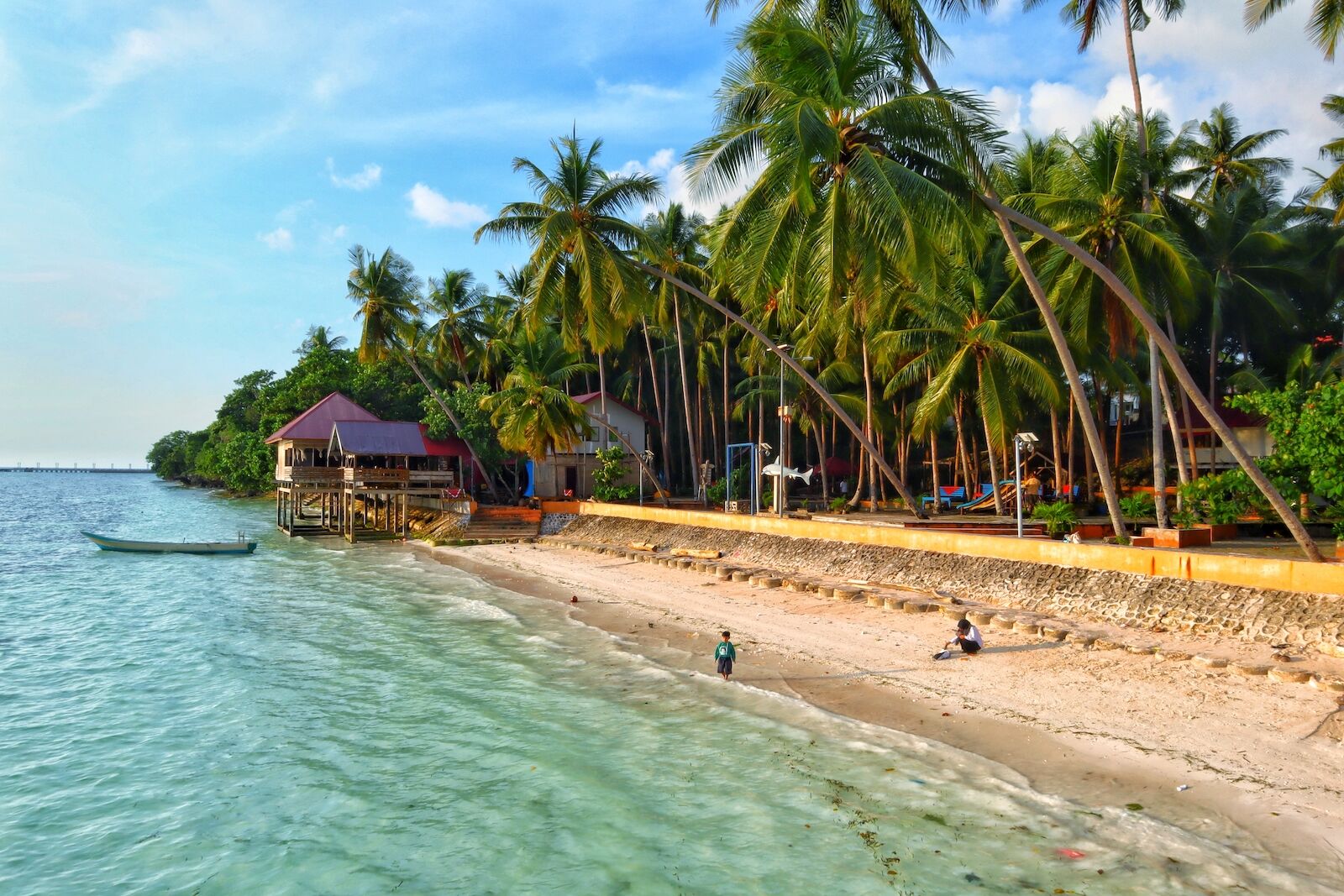
Photo: Hazar Gryan/Shutterstock
Also in Indonesia is Wakatobi Regency in Southeast Sulawesi. This archipelago of roughly 150 islands, with Wangi-Wangi, Kaledupa, Binongko, and Tomia being the largest, is not well known, even in the diving community — which is probably one of the few travel communities that knows it at all. The crown jewel is Wakatobi National Park, established in 1996 and covering more than 5,000 square miles. It’s extremely biodiverse and a top priority for conservation groups around the world.
Divers and snorkelers flock to Wakatobi for a reason: The coral reefs there are nothing short of spectacular. It has a vast array of marine life including fish, crustaceans, manta rays, and sharks, plus visibility that can exceed 100 feet and a generally dry climate (so storms that impact oceans are rarer than in other parts of the country). The varying depths within the national park cater to divers of all experience levels, from gentle coral gardens teeming with fish to advanced wall dives along dramatic underwater cliffs.
Beyond diving, Wakatobi offers opportunities to explore the islands above water. Visitors can hike through lush forests, kayak through mangrove channels, or relax on pristine beaches. It’s essential to try traditional seafood dishes from the local Bugis culture, and most hotels have on-site restaurants with a toes-in-the-sand vibe.
The main island is Wangi-Wangi, where you’ll find most of the lodging options on the remote islands. There are more places to stay than in some other remote islands on this list, but they’re still limited. Aside from a few eco-resorts and homestays, the main options are Wakitobi Dive Resort, Wakatobi Patuno Resort, and Naya Matahora Island Resort.
How to get to Wakatobi Regency
Traveling to Wakatobi Regency in Indonesia from the US isn’t a quick trip. You’ll probably have to fly from a major US city to an Indonesian gateway city like Jakarta or Denpasar, which will probably have at least one layover. Then, you’ll have to fly to Matahora Airport on Wangi-Wangi Island, the main entry point to Wakatobi. That flight will likely take three to five hours, but they only fly a few times a week, depending on the airline. Total travel time, including layovers, can range from 25 to 35 hours or more, depending on your specific flight options and wait times between connections.
Yap
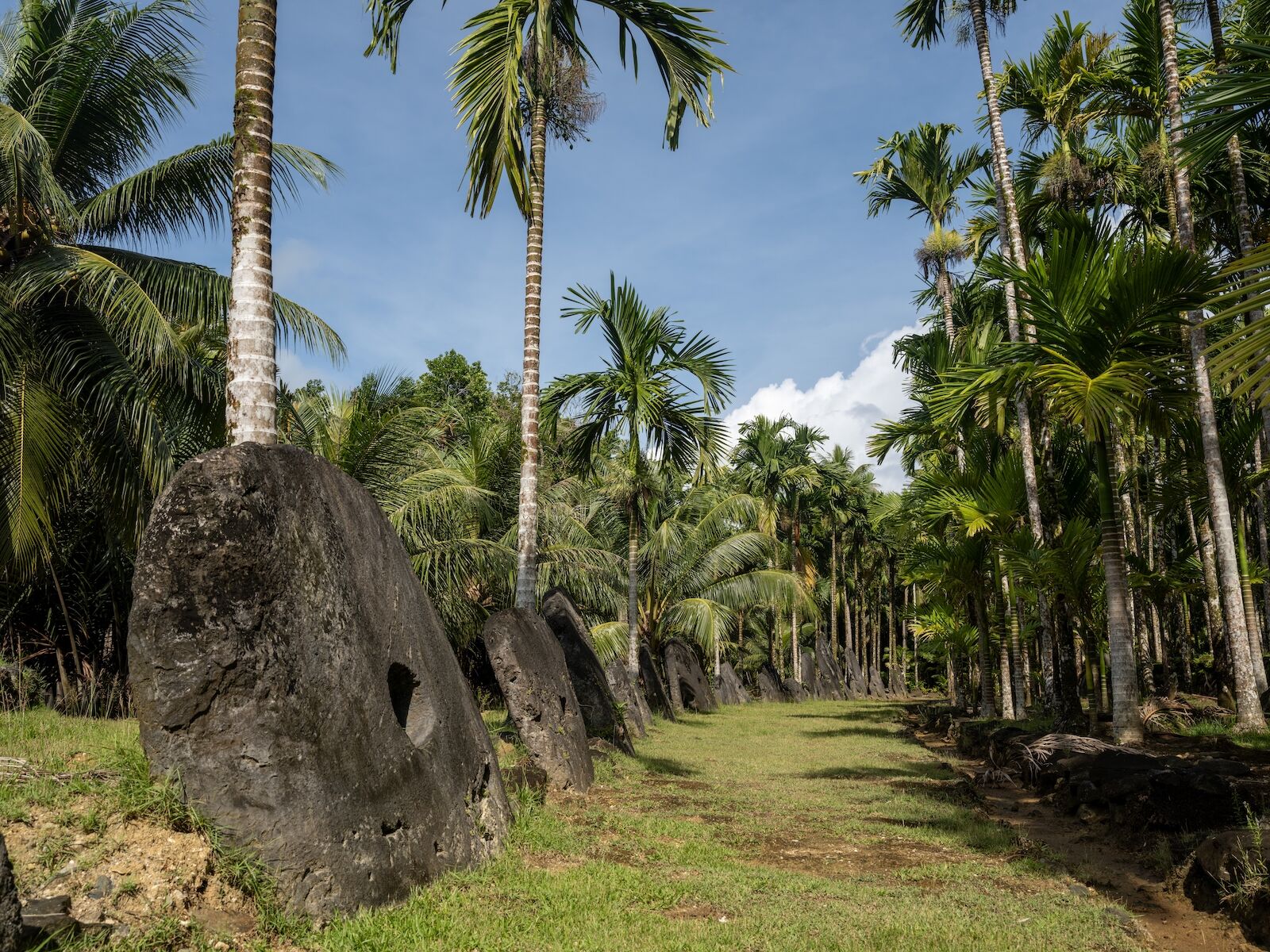
Stone coins in Yap. Photo: Stan de Haas Photography/Shutterstock
Far-flung in the western Pacific Ocean is Yap, part of the Federated States of Micronesia. While Yap itself is an island group, it’s also the name of the largest island within that group. The Federated States of Micronesia consists of four states between Guam and Palau, with Yap being the westernmost one.
One of the island’s most captivating elements is its history of using giant stone wheels, locally known as “rai.” The discs were once used as a form of currency and can weigh up to several tons and stand taller than a human. The US dollar is the main currency now, but the giant stone coins are still occasionally used for payment of traditional purchases, like land.
Yap’s environment is primarily dense rainforests on the island’s interior, with waterfalls and limestone caves available for tourists to visit. The remote island also has plenty of hiking trails leading to scenic viewpoints (and opportunities for rare birding), and paddling traditional canoe-type boats is also an activity available to visitors. Like many remote islands, scuba diving is a big draw, and dive resorts like Manta Bay Dive Resort and Yap Pacific Dive Resort are big into blackwater diving and dives to manta ray cleaning stations.
How to get to Yap
Yap is has some tourist facilities due to its direct flights from Guam, which make it easier to reach than other nearby destinations — but still not easy. Since there are no direct flights from any major US city, you’ll first need to fly to Guam, which will probably take at least two flights depending on where you live. Guam is the only departure city to reach Yap, and United Airlines is the only airline offering the route. It flies only twice a week and delays are common; this writer was delayed in Guam for four days by United while waiting for the flight to actually take off. So be patient, and allocate plenty of vacation time in case of significant delays.
Isla de la Plata
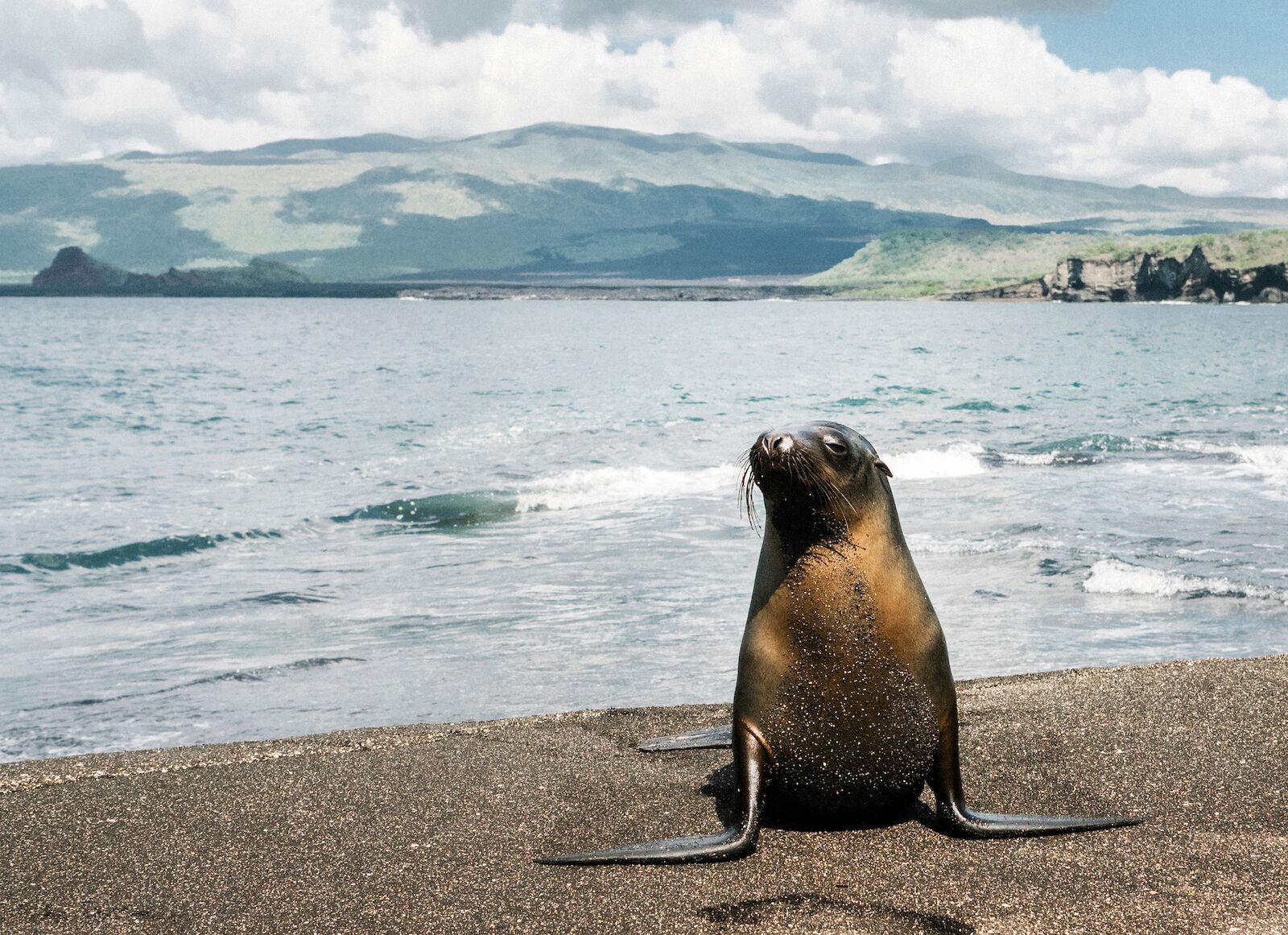
Photo: Rawpixel.com/Shutterstock
Isla de la Plata, also known as Silver Island, is a wildlife haven off the coast of Ecuador often called the “poor man’s Galapagos” due to its more affordable wildlife viewing. Like Galapagos, the remote island is packed with opportunities to encounter unique wildlife in their natural habitats. Remember that responsible tourism practices are crucial here. Respect the wildlife, maintain a safe distance, and avoid disturbing their natural behavior.
The landscape is mostly dry forests and rocky cliffs, making it a bucket-list destination for birdwatchers keen to see the blue-footed booby colonies. These seabirds have some of the brightest colors and most unique courtship displays on the planet, and live near similar species like Nazca boobies, red-footed boobies, and frigatebirds, among others.
Snorkelers can explore the crystal-clear waters surrounding the island and see huge colorful fish, playful sea lions, and gentle sea turtles. Whales often migrate around the area in June through October.
Wildlife aside, evidence suggests the remote island was once inhabited by Indigenous groups, and visitors can explore the remnants of that pre-Columbian presence here and there throughout the island. All tours to Isla de la Plata leave from the mainland, as the island itself is a national park and has no lodging or tourism companies. Look into one-day tours from companies like Adventures La Plata or Palo Santo Tours if you’re interested in visiting.
How to get to Isla de la Plata
Isla de la Plata’s gateway town for tours is Puerto Lopez, a small coastal town in Ecuador. The small town has a variety of accommodation options, restaurants catering to various budgets, and a relaxed atmosphere where most people are interested in wildlife and the outdoors.
Your first leg will most likely involve flying into a major Ecuadorian gateway city like Quito. From there, you can drive to Puerto Lopez (roughly nine hours), or fly from Quito to Guayaquil, then drive to Puerto Lopez from Guayaquil (about 3.5 hours). As with all remote islands on this list, budget in plenty of time for delays, as well as buses and boats that operate on a relaxed schedule.
St. Matthew Island
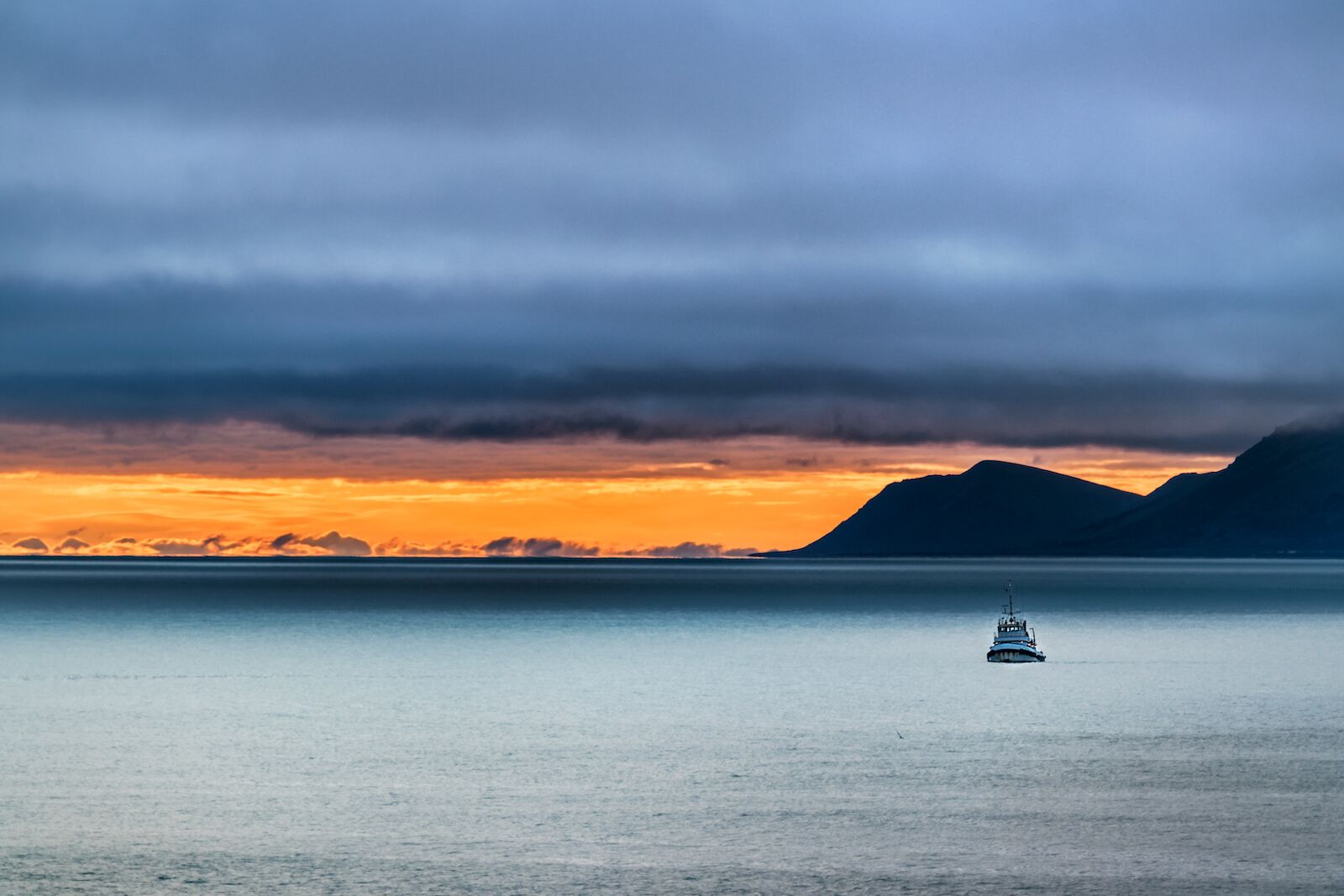
Photo: RUBEN M RAMOS/Shutterstock
Not all of the most remote islands in the world are tropical, as evidenced by Alaska’s St. Matthew Island. It’s said to be the most remote island in Alaska, known for being a pristine wilderness, untouched by permanent human settlements in the middle of the Bering Sea.
The island’s defining characteristic is its vast tundra, carpeted with wildflowers in vibrant purples, pinks, and yellows during the summer months. A few rustic hiking trails weave through the colorful expanse, leading to hidden lakes and dramatic coastlines. Birdwatchers will be in paradise, with millions of seabirds calling the island home, including puffins.
The island is part of the Alaska Maritime National Wildlife Refuge, and there are no facilities or services on the island, though there are a few campsites. The only way it’s visited is via boat charters or small-ship cruises, which usually offer kayaking adventures and opportunities to cruise the coastline looking for whales and spotting the remnants of an abandoned military base from World War II (one of the few times anyone lived on the island).
Due to its remoteness, visitor infrastructure is limited on St. Matthew Island. It adds to the island’s charm, offering a true escape from the modern world. But you need to be prepared for a true wilderness adventure.
How to get to St. Matthew Island
Forget scheduled flights or ferries – chartering a boat is your only option, unless you book one of the few cruises that visits the island. Look for reputable services in Alaskan coastal towns like Nome, Gambell, or St. Paul in the Pribilof Islands. These companies specialize in trips to remote locations and understand the specific requirements for visiting St. Matthew Island.
Weather in the Bering Sea is unpredictable, so aim for summer months (June to August) for more favorable conditions. If you’re hoping to camp, bring absolutely everything you’ll need, and arrange your permit through the U.S. Department of Fish and Wildlife’s Bering Sea Wilderness office. Contact the office directly to learn more.
Ngazidja
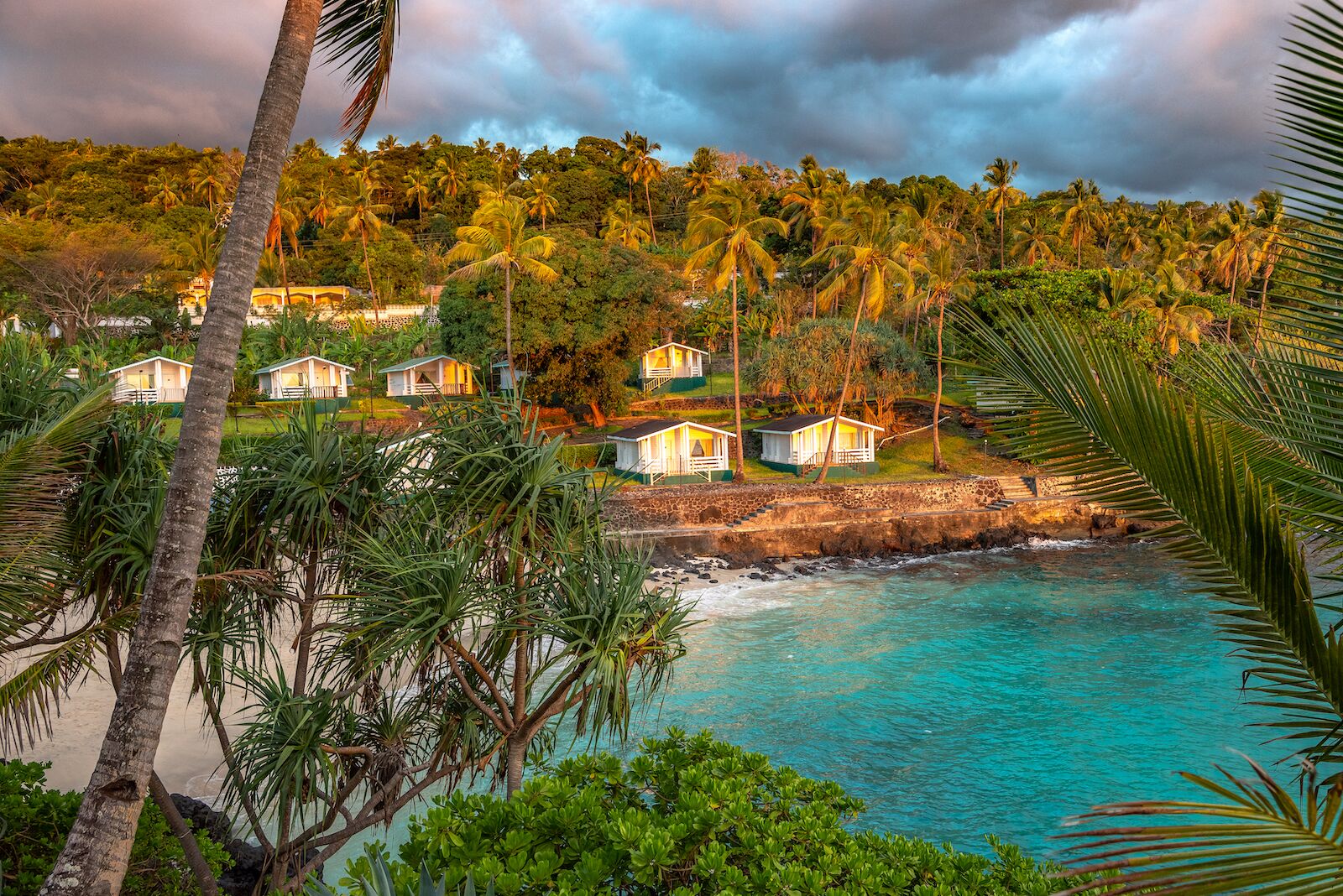
Photo: MBrand24/Shutterstock
If you’ve never heard of Ngazidja, don’t worry — most people haven’t even heard of the country it’s in (Comoros). Ngazidja, also known by its French colonial name of Grande Comore, is the largest island of the Comoros archipelago, a string of volcanic islands between Mozambique and Madagascar. Ngazidja’s unique charm lies in its breathtaking natural beauty, rich cultural heritage, and relaxed island vibes.
The remote island’s interior is dominated by the active volcano of Mount Karthala, and surrounded by lush rainforests, cobalt-blue beaches, and dramatic craters. Adventurous travelers can trek to the rim of Karthala for otherworldly views, though most people visit for the beaches, known for soft sand, turquoise water, and very few people.
The island’s capital is Moroni, a small and colorful town with a bustling marketplace and mosques showcasing Islamic architectural influences. Expect fresh, simple seafood dishes, usually served from low-key beachside grills. There’s no real tourist infrastructure, so bring all your own snorkel gear (as well as anything else you may need). You can occasionally find rentals for kayaks or boat operators on the main beach (Itsandara), but it’s all very casual, with no reservations or advanced planning available.
Accommodation options on Ngazidja are equally limited and very casual. Guesthouses are the most common type of accommodation, though there are a few mid-range beach hotels that allow you to make reservations in advance, such as Retaj Moroni Resort or Al Camar Lodge.
The main languages of the country are Comorian, French, Arabic. You’ll be embraced with open arms if you’re one of the few Comorian speakers in the world, but if not, French or Arabic should get you a long way. If you don’t speak either of those, download Google Translate — English is not spoken much at all.
How to get to Ngazidja
As far as remote islands go, Ngazidja falls into the category of “difficult, but not as bad as you might expect.” That’s because you can connect to Prince Said Ibrahim International Airport in Ngazidja from several major cities in Africa, meaning you’ll likely have only three flights from the US — or perhaps even two, if you’re near an airport from which you can fly directly to a city like Cairo, Dar Es Salaam, Addis Ababa, or Nairobi. You’ll have several airline choices for the last leg to Comoros, including Air Austral, Ethiopian Airlines, or Kenya Airways.